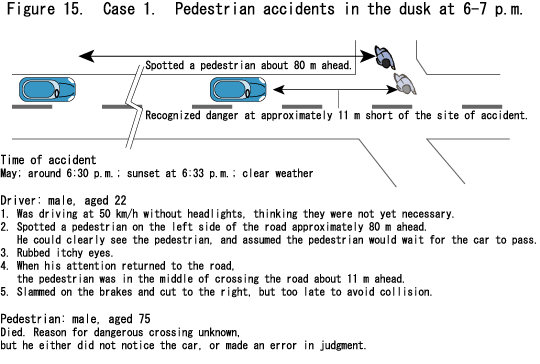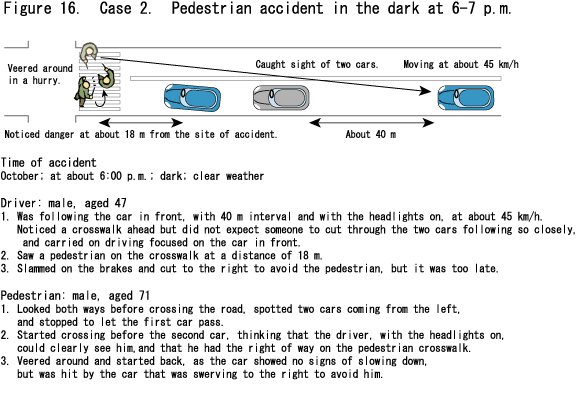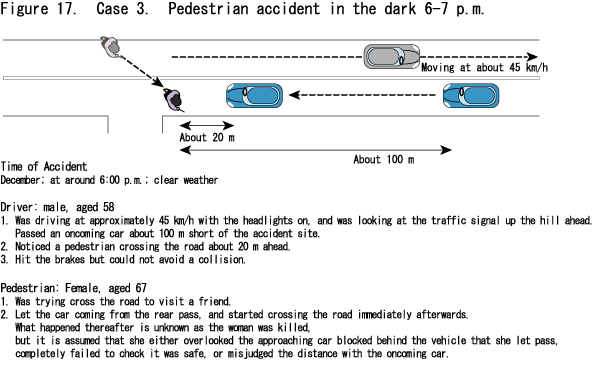
|

This section examines typical cases of walkers' traffic accidents in the dusk and at night, from the traffic accident surveys conducted by ITARDA.
|
|
|

|
|
The causes of this accident were as follows.
1. The driver did not turn on the headlights, thinking it was still light enough. As he could clearly see the pedestrian, he thought the pedestrian could clearly see him, judged there was no danger, and did not give it a second thought.
2. Judging from the circumstances, the pedestrian either spotted the approaching unlit car too late because of his age, misjudged the car's distance and speed, or did not check safety at all.
|
|
|

|
|
The causes of this accident were as follows.
1. The driver noticed the pedestrian crossing, but thought that no pedestrian would try to cross in front of him with such a short gap between vehicles. He was focusing on the tail lamps of the car in front and the area lit by his own car, but not on the dark area around them.
2. The pedestrian was probably sure that the driver could clearly see him with the bright headlights, or, being dark, he may have misjudged the distance between himself and the car. Other factors may include having the right of way on the crosswalk, and loss of concentration after letting the first car pass.
|
|
|

|
|
The causes of this accident were as follows.
1. The driver was looking ahead but failed to spot the pedestrian walking toward his car from the right side of the road due to the darkness. With his eyes caught by the bright signals and the area lit by his own car, he neglected the dark areas.
2. Although it is only possible to guess from the circumstances, the pedestrian probably became careless, after letting the car pass, about checking traffic in the opposite lane, or overestimated the distance to the car due to the darkness.
|
|
|
UP
Back
|
